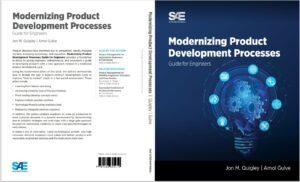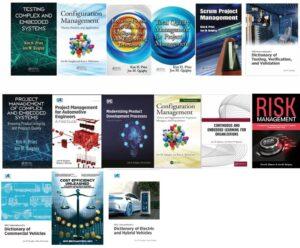Product Quality in Product Development Project Management
Product Quality in Product Development Project Management
Introduction
In today’s competitive market, product quality is not just a desirable attribute—it’s a fundamental requirement for successful product development and project management. Integrating product quality into every project lifecycle ensures that the final product meets customer expectations, regulatory standards, and business goals. The quality of the product will have a bearing on the project’s profitability; the cost of poor quality can be costly, quickly eroding any profit margin, not to mention the reputational impacts.
Why Product Quality Matters in Product Development
Product quality directly impacts customer satisfaction, brand reputation, and long-term profitability. Product development must consider quality from the earliest planning stages to final delivery. High product quality reduces costs associated with rework, defects, and customer complaints while accelerating market time and enhancing competitive advantage.
Unlike project schedule and cost, the product quality is more difficult to know before the product launch, and we should know this as much as possible before launch. This will require us to plan for the quality of the outcome, and will include things like design and documentation reviews, testing and verification activities to name a few.
The Role of Project Management in Ensuring Product Quality
Project management provides the structure and discipline needed to embed product quality throughout development. Effective project management practices ensure that:
-
Quality objectives are defined during project planning.
-
Quality assurance and control measures are implemented at every stage.
-
Project quality metrics are defined, including responsibility for measuring, method of gathering, and presentation.
- Cross-functional teams collaborate to share knowledge and solve problems quickly. This includes deviations of the metrics from the expected.
-
Risks to product quality are identified and mitigated early.
A robust work breakdown structure will disaggregate the scope and help identify all quality-related activities. This will ensure nothing is overlooked and the team can measure and control quality alongside cost and schedule.
Key Strategies for Achieving Product Quality in Project Management
1. Cross-Functional Collaboration
Combining diverse skill sets and perspectives fosters innovation and problem-solving, which are critical for achieving high product quality. Cross-functional teams ensure that quality considerations are integrated into design, engineering, and manufacturing decisions. From experience, project management requires balancing competing priorities. To do this, we will need to have a variety of perspectives. This will require us to set an operating area for the team that allows for this free collaboration.
2. Knowledge Integration and Sharing
Leveraging existing knowledge and lessons from previous projects helps prevent recurring quality issues. Project leaders skilled in multiple domains can make informed decisions that balance innovation with reliability. Gathering and monitoring present project metrics provides a mechanism for learning.
3. Proactive Quality Management
Quality management is not just about detecting defects after the fact. Proactive practices—such as quality planning, regular audits, and continuous improvement—help prevent issues before they arise, streamlining workflows and reducing costs. We can add gauges ( Gauge Repeatability and Reproducibility) or poke yoke the line to avoid mistakes (for example, color code connectors) to the manufacturing line.
4. Clear Metrics and Continuous Improvement
Defining clear quality metrics and regularly reviewing them ensures that the project stays aligned with quality goals. We should have plans on the specific items to measure regarding the product characteristics that will allow us to predict the quality of the product. We need leading indicators. As we do the work, we will learn things that may impact what we measure and how we measure. Continuous improvement practices, such as Total Quality Management, Lean, and Six Sigma, drive ongoing enhancements in both processes and outcomes.
Conclusion
Integrating product quality into product development project management is essential for delivering products that meet or exceed expectations. By embedding quality in every phase, leveraging cross-functional teams, and adopting proactive management practices, organizations can achieve better project outcomes, reduce costs, and build lasting customer trust.
For more information, contact us:
The Value Transformation LLC store.
Follow us on social media at:
Amazon Author Central https://www.amazon.com/-/e/B002A56N5E
Follow us on LinkedIn: https://www.linkedin.com/in/jonmquigley/
https://www.linkedin.com/company/value-transformation-llc
Follow us on Google Scholar: https://scholar.google.com/citations?user=dAApL1kAAAAJ





